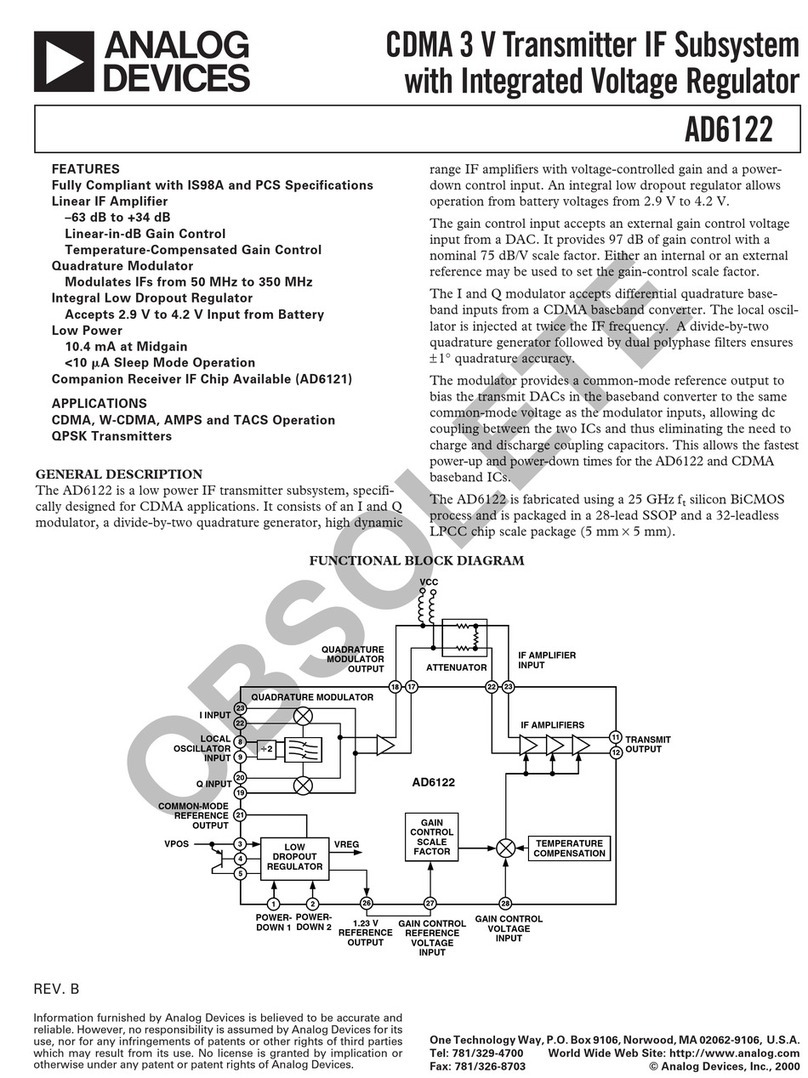
ADV7511W HARDWARE USER’S GUIDE
Rev. A
Page 3 of 45 Rev A
TABLE OF CONTENTS
Section 1: Introduction.........................................................................................................................................................................................7
1.1Scope and Organization.......................................................................................................................................................................7
1.1.1Links ................................................................................................................................................................................................7
1.1.2Symbols ...........................................................................................................................................................................................7
1.1.3Format Standards...........................................................................................................................................................................7
1.2Overview ................................................................................................................................................................................................8
1.3Hardware Features................................................................................................................................................................................8
1.4Supported Input Formats ....................................................................................................................................................................8
1.5Supported Output Formats .................................................................................................................................................................8
Section 2: Reference Documents.........................................................................................................................................................................9
2.1ADI Documents....................................................................................................................................................................................9
2.2Industry Specifications.........................................................................................................................................................................9
Section 3: Block diagram ....................................................................................................................................................................................10
Section 4: Specifications......................................................................................................................................................................................11
4.1Explanation of Test Levels.................................................................................................................................................................15
4.2ESD Caution........................................................................................................................................................................................15
Section 5: Pin and package information...........................................................................................................................................................16
5.1Mechanical Drawings and Outline Dimensions ............................................................................................................................19
Section 6: Functional Description.....................................................................................................................................................................20
6.1Input Connections..............................................................................................................................................................................20
6.1.1Unused Inputs..............................................................................................................................................................................20
6.1.2Video Data Capture Block..........................................................................................................................................................20
6.1.2.1Video Input Connections ...................................................................................................................................................20
6.1.3Audio Data Capture Block .........................................................................................................................................................26
6.1.3.1Supported Audio Input Format and Implementation....................................................................................................26
6.1.3.2Inter-IC Sound (I2S) Audio ...............................................................................................................................................28
6.1.3.3Sony/Philips Digital Interface (S/PDIF) ...........................................................................................................................30
6.1.3.4HBR Audio............................................................................................................................................................................30
6.1.4Hot Plug Detect (HPD) pin........................................................................................................................................................30
6.1.5Power Down / I2C Address (PD/AD) ......................................................................................................................................30
6.1.6Input Voltage Tolerance .............................................................................................................................................................31
6.2Output Connections...........................................................................................................................................................................31
6.2.1Output Formats Supported ........................................................................................................................................................31
6.2.2TMDS Outputs.............................................................................................................................................................................31
6.2.2.1ESD Protection.....................................................................................................................................................................31
6.2.2.2EMI Prevention....................................................................................................................................................................31
6.2.3Display Data Channel (DDC) pins............................................................................................................................................31
6.2.4Interrupt Output (INT) ..............................................................................................................................................................32
6.2.5PLL Circuit....................................................................................................................................................................................32
6.3Consumer Electronic Control (CEC) ..............................................................................................................................................32
6.3.1Unused Inputs..............................................................................................................................................................................32
6.3.2CEC Function...............................................................................................................................................................................32
6.4Video Data Formatting......................................................................................................................................................................33
6.4.1Supported 3D Formats................................................................................................................................................................33
6.4.2DE, Hsync and Vsync Generation.............................................................................................................................................33
6.4.3Color Space Conversion (CSC) Matrix.....................................................................................................................................34





























